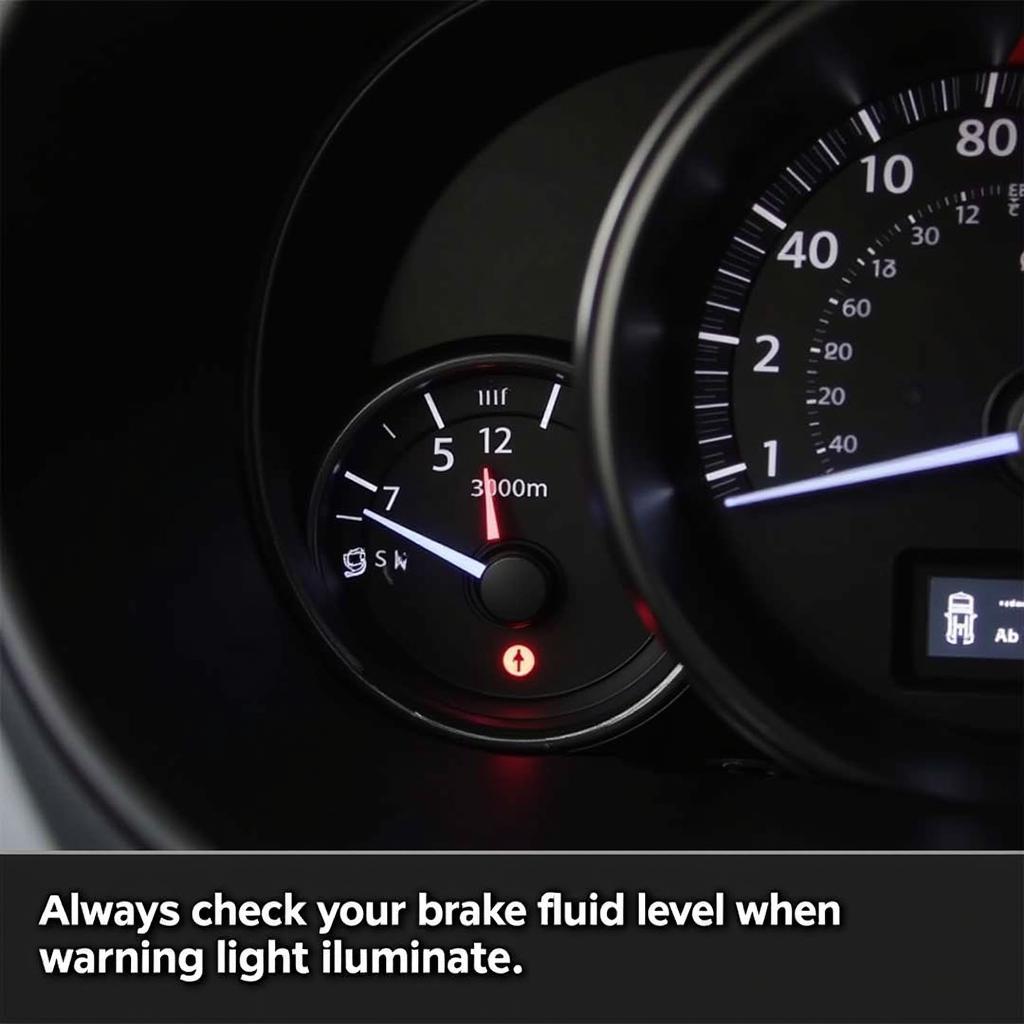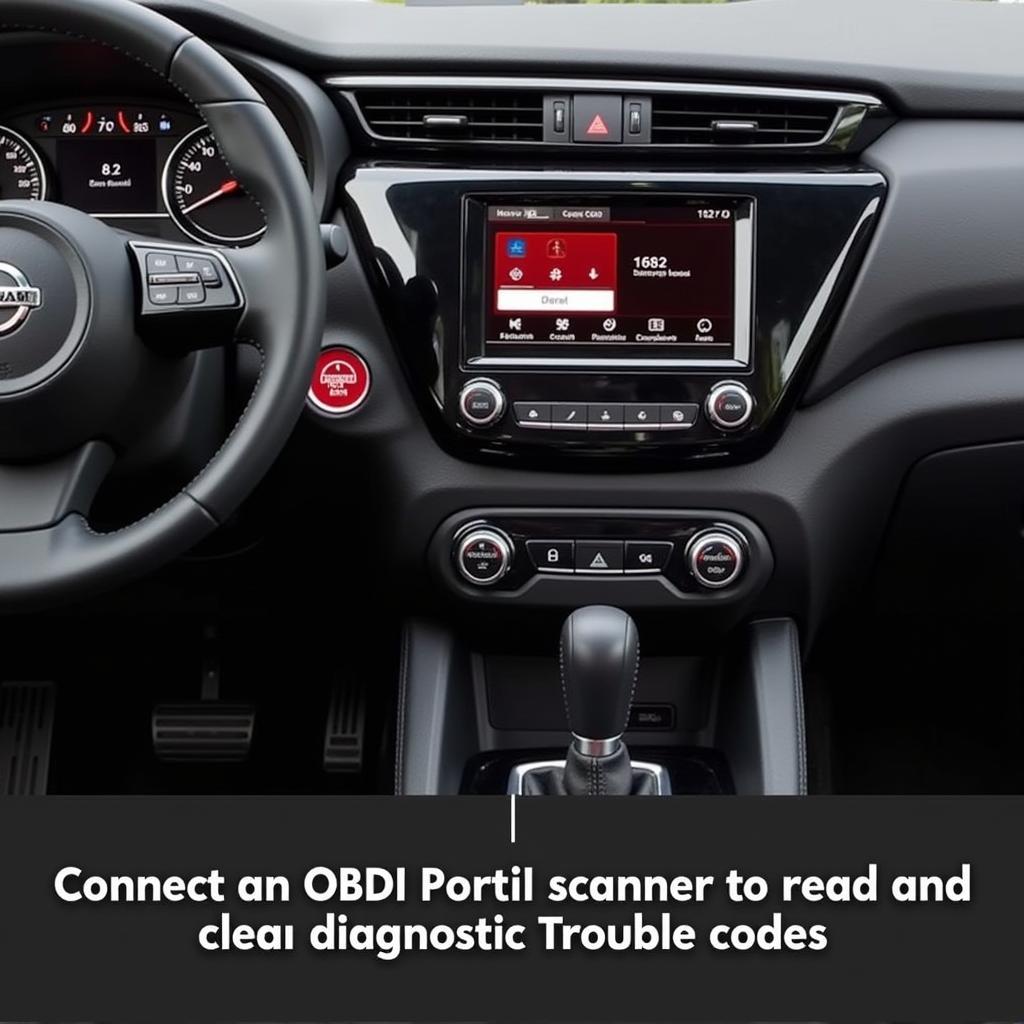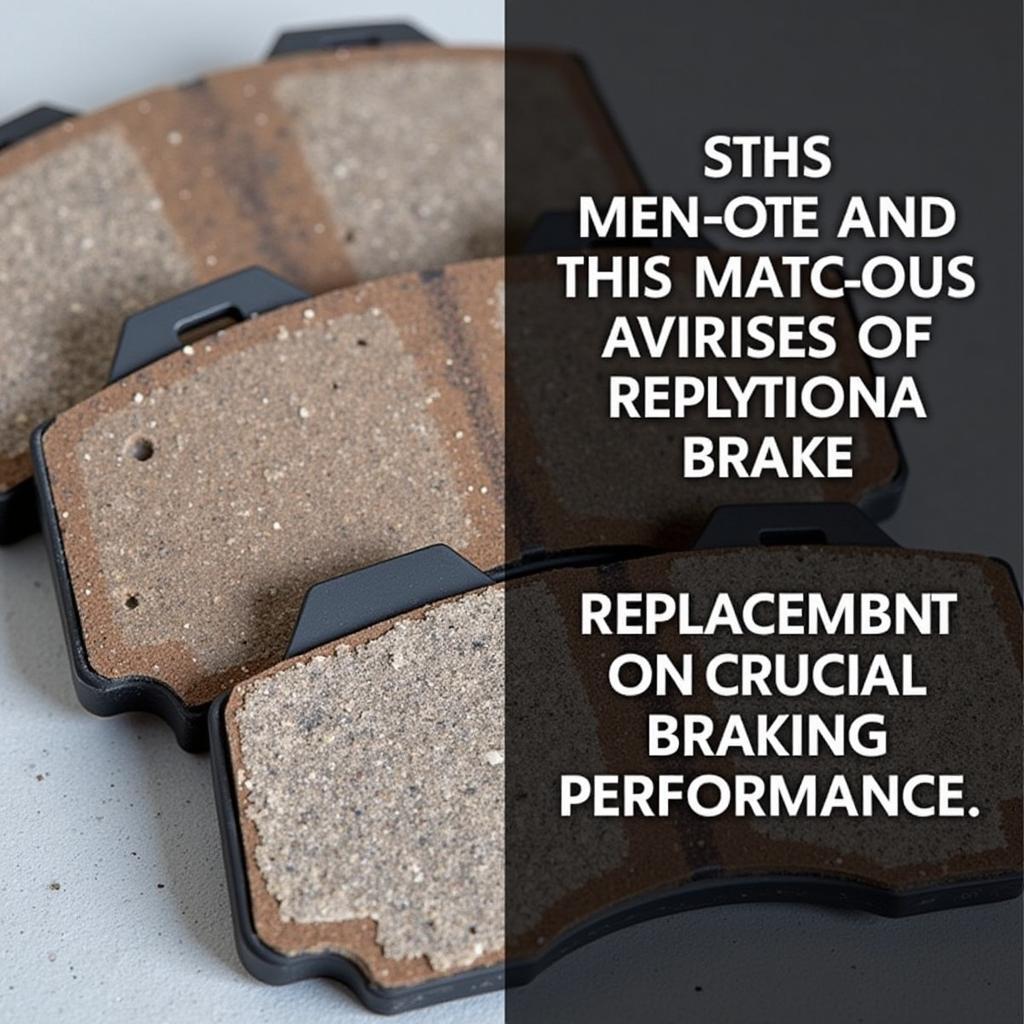The brake warning light on your Nissan Kicks dashboard is a crucial safety feature, designed to alert you to potential problems within your braking system. Ignoring this warning light could lead to reduced braking performance and increase the risk of an accident. This comprehensive guide will help you understand the common causes of the Nissan Kicks brake warning light and provide step-by-step solutions to get you back on the road safely.
Understanding Your Nissan Kicks Brake Warning Light
The brake warning light, often symbolized by a red circle with an exclamation mark (!) or the word “BRAKE,” can illuminate for various reasons. While a simple disengaged parking brake is often the culprit, more serious issues may be at play.
Common Causes of a Nissan Kicks Brake Warning Light
Several factors can trigger the brake warning light in your Nissan Kicks:
- Engaged Parking Brake: This is the most straightforward cause. Always ensure your parking brake is fully disengaged before driving.
- Low Brake Fluid Level: Brake fluid is the lifeblood of your braking system. A leak in the system can lead to low fluid levels, compromising braking performance.
- Worn Brake Pads: Brake pads naturally wear down over time. When they reach a critical thickness, the brake warning light will activate as an urgent replacement reminder.
- Faulty Brake Light Switch: This switch, located behind the brake pedal, signals your brake lights to illuminate when you brake. A malfunctioning switch can disrupt this process and trigger the warning light.
- ABS System Malfunction: The Anti-lock Braking System (ABS) prevents wheel lockup during hard braking. A fault within the ABS module or sensors can trigger the warning light.
- Other Issues: Less commonly, issues like a faulty brake master cylinder, damaged brake lines, or electrical problems can also trigger the warning light.
Diagnosing the Problem
Determining the root cause behind your Nissan Kicks brake warning light is essential for effective repair:
- Check Your Parking Brake: Ensure it’s fully disengaged. If the light remains on, proceed to the next step.
- Inspect Brake Fluid Level: Locate the brake fluid reservoir under the hood (refer to your owner’s manual). Check the fluid level against the minimum and maximum markings.
- Visually Inspect Brake Pads: If possible, examine your brake pads through the wheel spokes. Look for excessive wear or if the pad material is close to the metal backing plate.
- Listen for Unusual Noises: Grinding or squealing sounds during braking can indicate worn brake pads.
 Nissan Kicks Brake Fluid Reservoir
Nissan Kicks Brake Fluid Reservoir
When to Seek Professional Help
If your brake warning light remains illuminated after checking the parking brake and brake fluid level, or if you suspect a more serious issue, it’s crucial to seek professional assistance immediately. Driving with a compromised braking system is extremely dangerous.
Nissan Kicks Brake Warning Light Reset
In some cases, the brake warning light might stay on even after addressing the underlying issue. This typically requires a manual reset. While the exact procedure can vary slightly depending on the model year, here’s a general guide:
- Turn the ignition ON: Don’t start the engine yet.
- Locate the OBD-II port: This port is usually located under the dashboard on the driver’s side.
- Connect an OBD-II scanner: These are readily available at auto parts stores.
- Follow the scanner’s instructions: The scanner will guide you through the process of reading and clearing the brake warning light code.
 Nissan Kicks OBD-II Port Location
Nissan Kicks OBD-II Port Location
Important: If you’re uncomfortable performing this procedure yourself, seek professional assistance from a qualified mechanic or Nissan dealership.
Preventing Future Brake Warning Light Issues
Proactive maintenance is key to preventing future brake warning light issues in your Nissan Kicks:
- Regular Brake Inspections: Schedule routine brake inspections with a qualified mechanic, especially if you frequently drive in city traffic or harsh conditions.
- Timely Brake Pad Replacements: Don’t wait for the warning light to illuminate before replacing worn brake pads. Consult your owner’s manual for recommended replacement intervals.
- Quality Brake Fluid: Use high-quality brake fluid and flush the system according to your Nissan’s maintenance schedule.
- Address Leaks Promptly: Any signs of brake fluid leaks should be addressed immediately by a professional.
Expert Insight
“Many car owners underestimate the importance of regular brake maintenance,” says John Smith, a certified automotive technician with over 15 years of experience. “Don’t wait for warning lights or unusual noises. Proactive inspections can save you from costly repairs and keep you safe on the road.”
 Nissan Kicks Brake Pad Replacement
Nissan Kicks Brake Pad Replacement
Conclusion
The brake warning light in your Nissan Kicks should never be ignored. By understanding the common causes and taking prompt action, you can ensure optimal braking performance and maintain safe driving conditions. Regular maintenance and timely repairs are essential investments in your safety and the longevity of your vehicle.
